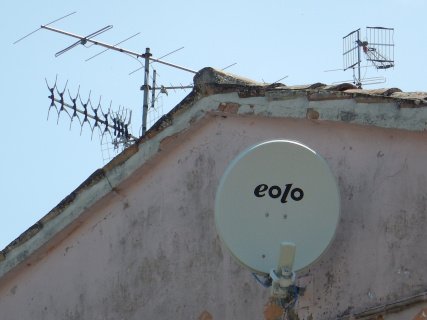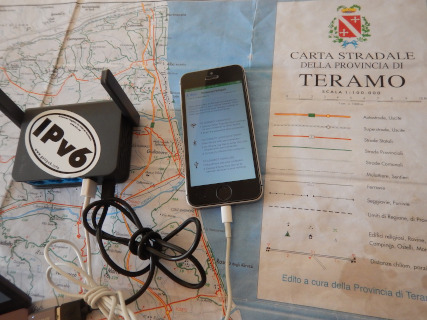 I was recently traveling in Europe. My journey took me to Italy first, so I picked up a tourist SIM card for my phone with 50 GB of data (for a 30 day period), all for the low price of €45. I now had oodles of data, and could easily tether my laptop to my phone for internet access.
I was recently traveling in Europe. My journey took me to Italy first, so I picked up a tourist SIM card for my phone with 50 GB of data (for a 30 day period), all for the low price of €45. I now had oodles of data, and could easily tether my laptop to my phone for internet access.
IPv4-only Landscape
Sadly, the internet access that Vodaphone Italy provided was IPv4-only. And I found the same at the Rome airport (but to be fair most airport Wifis are IPv4-only). Even a local wireless internet provider, Eolo in Abruzzo was IPv4-only.

Tethering for Internet
I was staying in a small village outside of Teramo (100km NE of Rome), and internet was only via tethering to my phone. And life would have been IPv4-only, except I had brought my OpenWrt travel router (a GL-iNET AR750S), which has Wireguard configured to VPN IPv6 back to my house (see Wireguard IPv6 VPN).

Wireguard can punch through multiple layers of NAT44.
Avoiding the double Wifi Hop
Initially, I had the router connected to my cellphone hotspot via Wifi. But that incurs a double Wifi hop, which increases latency. I followed the excellent OpenWrt guide to USB Tethering to configure the router and connect it the cell phone directly. The guide even covers the additional steps needed for Apple iPhone tethering.

Thanks to 4G tethering, I now had IPv6, via the Wireguard VPN.
The disadvantage of cellular roaming
I also traveled to Sweden, hoping that IPv6 support would be better on cellular. Alas, it was not to be. Although Europe has regulations about roaming in other EU countries that also means that your service in your home country should be the same in the roamed country.
Which means that although I had a strong 4G signal in Sweden with a local carrier, I was still limited to vodaphone.it’s IPv4-only service. Fortunately, I had a tethering/IPv6 VPN router ready to roll.
Bringing new wine to old bottles
Traveling is always full of new experiences. Maybe I shouldn’t have been surprised that the old country of Italy was still running on IPv4-only.
Fortunately, a light-weight little travel router such as the GL-iNET AR750S running OpenWrt can provide IPv6 even in the land of ancient Rome.
- I didn’t do an extensive survey of Italian ISPs for IPv6 support. The ones I encountered did not support IPv6.
- Yes, the latency removed by USB-tethering doesn’t really make up for the latency of transporting my IPv6 traffic all the way back to Canada, but it was a start.